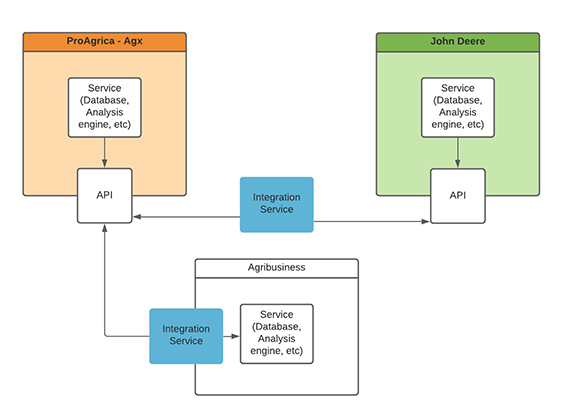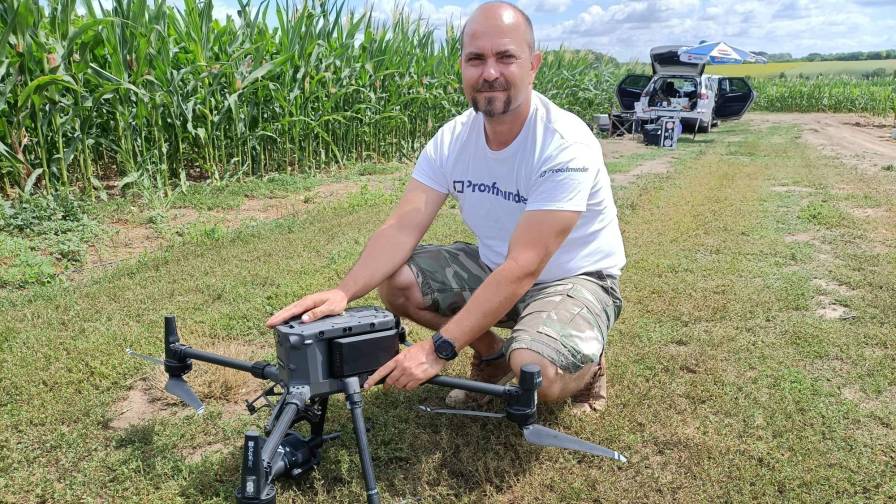Big Data, Big Crops? How Ag Can Harness the Power of Satellites and the Cloud
Humanity landed on the Moon more than half a century ago. Computer powers to calculate this “giant leap” were smaller than the average smartphone user enjoys today. Big data is nowadays the next big thing, having already revolutionized several industries. Meanwhile, agriculture still relies heavily on several “old-fashioned” approaches or weather wisdom. Is it how growers are going to feed the population of the planet, which is expected to be at 10 billion by 2050? Hardly. Merging the power of modern technologies and the daily work of farmers is one of the key challenges the ag industry is facing.
How Big Data Changes Businesses
In terms of big data, farming is still lagging behind, while plenty of industries have already integrated and effectively use this. Especially in recent years, when data-driven decisions have become not a mere innovation but an issue of survival in highly competitive markets. The global big data market is forecast to grow to $103 billion by 2027, facilitating businesses to analyze their performance, minimize risks, and meet the needs in their niche. Moreover, according to an Accenture study, 79% of business executives say that not embracing big data will cause companies to lose competitive positions and risk extinction.
Every business today is a data business, agriculture being no exception. What ag data should one take into account? For instance, information provided by satellite crop monitoring platforms with their cloud-based capacities. Powered by machine algorithms and neural networks, they show farmers the situation with soils, fields, and crops. Having these data, a grower can make smarter decisions concerning, for instance, water and fertilizer application.
As Report Linker states, “the global agriculture analytics market size is expected to grow […] to $1.236 million by 2023, at a Compound Annual Growth Rate (CAGR) of 16.2% during the forecast period.” As the precision ag market grows and matures, farmers begin to opt for data-driven solutions like AI and machine learning.
MORE BY EOS CROP MONITORING
Satellite Crop Monitoring Service Available for Free Amid COVID-19 Pandemic
Big data comes with big opportunities. In this case, it improves growers’ ability to get aggregated trends, assess risk and reward, forecast needs for supplies, increase yields, and build predictive models for them.
Complex Solutions to Complex Problems
Should big data also mean big costs? Not necessarily. Advanced ag technologies not only help make smarter (and often environmentally friendlier) decisions but also contribute to productivity-improving interventions. Equipped with data, growers can produce yields with smaller inputs, being able to accurately calculate their budgets. The Conversation has estimated in its research that “smarter farming practices could generate $2.3 trillion in cost savings and business opportunities annually – and $250 billion of those yearly savings could come from AI and data analytics alone.”
The integration of satellite information and cloud systems provides solutions and guarantees financial stability for farmers and their businesses. A data-driven approach allows them to overcome modern challenges like climate change and depletion of viable farmland with high cost-effectiveness. The precision ag platform EOS Crop Monitoring estimates that the cost advantage of this technology together with the entire suite of precision agriculture can vary between 5% to 20%, not to mention the better time and workforce management.
Meanwhile, the scarcity of software and tools causes the irrational distribution of inputs and yield reduction. For instance, an irrigation system is used only on 17% of the world’s cultivated land, while the other areas are fed only by rain. In contrast, using satellite imagery one can know for sure which field zones most require water and thus prevent crop losses.
Smart Crop Production
To find answers to the increasing food demand, profitability issues, and climate changes, farmers, policymakers, and industry leaders address the power of technologies like satellites, Internet of Things (IoT), cloud computing, and mobile computing. What are the peculiarities of these innovations?
Satellites
Visualized data characterizes fields in detail and allows growers to select appropriate cultivation practices. With satellite crop monitoring platforms, decision-making on soil treatment becomes fast and reliable. The obtained data aids farmers to get a broader picture and analyze the changes over time.
Internet of Things
Data is collected from wireless sensors placed in fields. Growers use them to estimate different agricultural parameters such as temperature, hydration, and the like. This solution is nevertheless costly and requires high maintenance expenses.
Cloud Computing
When gathering data from IoT, growers need to accumulate and store it. Cloud computing solves this problem as it serves as an easily accessible platform for sharing resources. In the case of satellite imagery, the situation is even easier. One does not need computer capacities to analyze the images, the cloud-based platform would do it instead. Additionally, its reasonable price doesn’t require large expenses.
Mobile Computing
The technology is applied to send regular updates about product details, market, or weather.
What Can Farmers Do with Big Data?
To stay ahead of the pack, growers implement Big Data for different purposes.
Increase Yields
Obviously, rational distribution of resources results in better farm results. Farmers don’t have to make intuitive decisions anymore. By choosing to use Big Data, they attain a multi-faceted tool that provides analysis of crop health. What’s more, growers select proper plant treatment depending on the needs of different zones. With data-driven crop farming, they can adjust the growing process, utilize resources reasonably, and avoid crop scarcity.
Use Water and Fertilizers Sustainably
Soil fertility is one of the crucial aspects of crop production that can be improved and increased with Big Data. Its detailed analysis assists to evaluate the farmland quality and select the proper ratio between water and fertilizers.
Optimize costs and efforts
Growers can implement cost-effective techniques and optimize expenses. When processing data from cloud systems, they can compare inputs and revenue to manage their business reasonably. In addition, this information enables them to minimize labor efforts and diminish costs.
Manage Market Issues
Big Data allows growers to estimate crop production and make projections. In addition, farmers and cooperatives will be able to adjust their market strategy as well as cope with unpredictable hurdles with little loss in logistics.
How to Start with Big Data in Ag?
Being a strategic economic sector, agriculture requires the integration of Big Data to become more efficient and productive. Modern IT-tools are already providing various solutions to tackle even the smallest farming issues. Not to mention their potential to awake the interest of a younger generation, that loves to play with the new tech, to farming. Young people get more willingly engaged in industries where they can use innovative technologies. Precision ag enables them to run farmlands with data-driven approaches to develop their business and gain yield efficiency.
In terms of costs, satellite monitoring with its reasonable entry price can be a win-win option for farmers to start with. It’s a cornerstone for transformations in the sector, because growers can control large territories without extra human resources and vehicle maintenance. Big Data enables them to respond in time and avoid loss.
In 2020, growers are still to meet several challenges and adapt to a fast-changing world. Maybe, in 2050, when 10 billion people inhabit the planet and cars may fly over the cities, one can only get to know about famine from books. Perhaps, it would have been the decision to make agriculture technological and data-driven that prevented the global crisis in the food industry.









